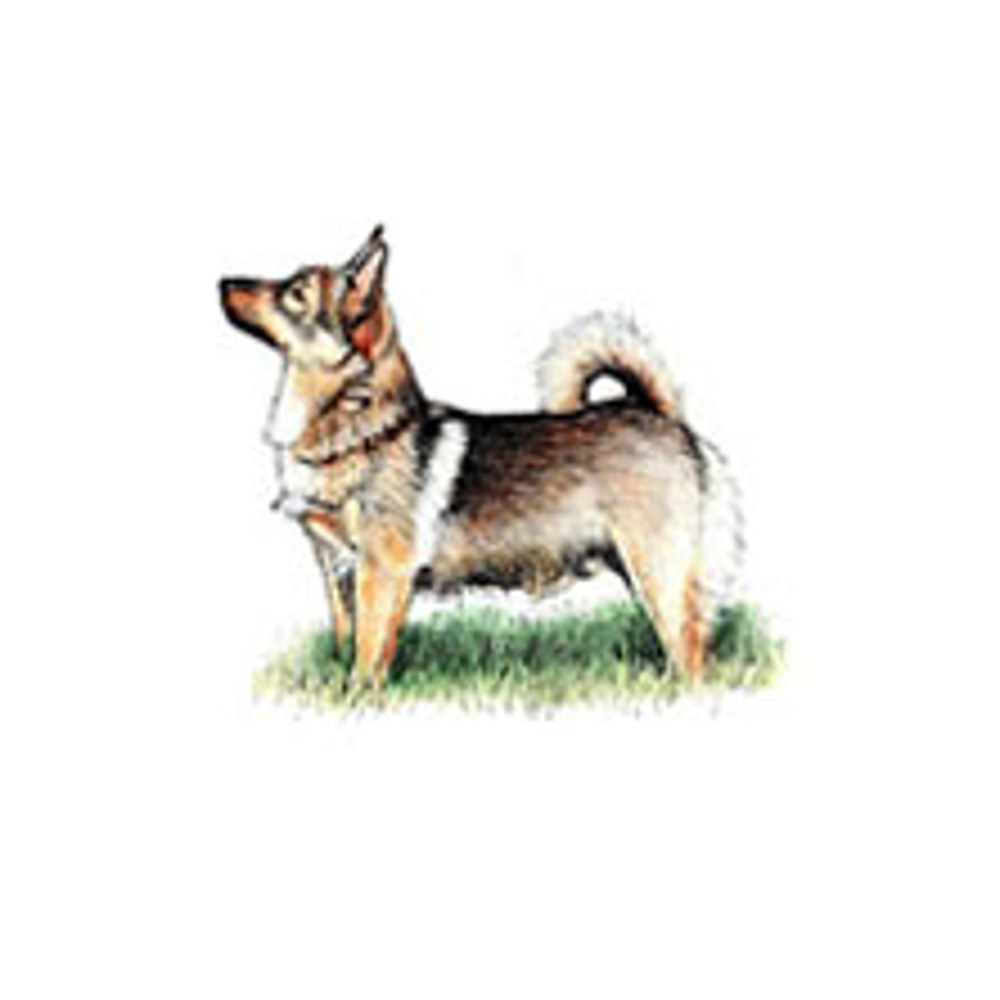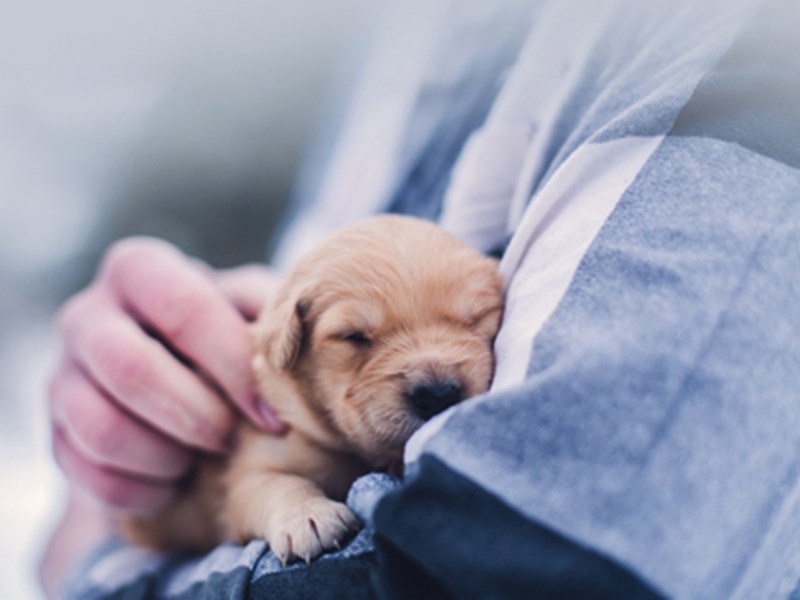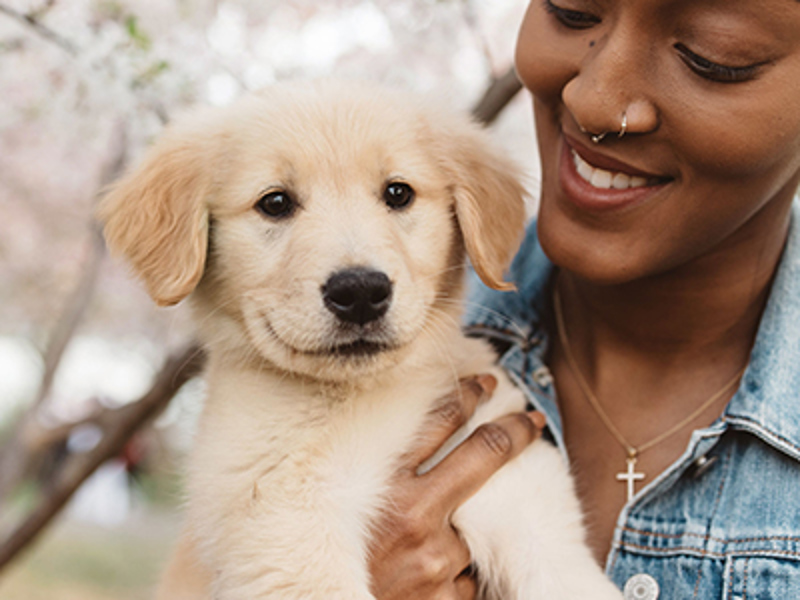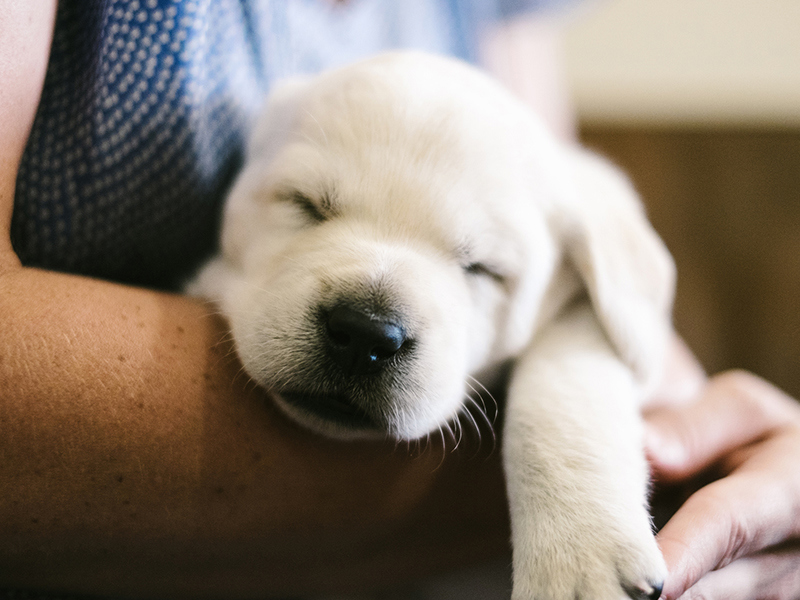
Swedish Vallhund
Breed characteristics
- Size
- Small
- Exercise
- Up to 1 hour per day
- Size of home
- Small house
- Grooming
- Once a week
- Coat length
- Short
- Sheds
- Yes
- Lifespan
- Over 10 years
- Vulnerable native breed
- No
- Town or country
- Either
- Size of garden
- Small/ medium garden
About this breed
The Swedish Vallhund bears a passing resemblance to the Welsh Corgi and breeders dispute the relationship, if any, between the breeds. Whilst some Corgi breeders claim that Viking raiders took some of their Welsh heelers back to Scandinavia, devotees of the Vallhund claim the reverse: Vikings took dogs of Vallhund type with them on their raids and some of these dogs were left behind and played a part in the origins of the Corgi.
What is not debated is the fact that the breed was almost extinct by the 1930s but was rescued by the Swedish Count Bjorn von Rosen. Travelling around the district of Vastergotland, and especially near the town of Vara, he recognised a population of dogs of very similar appearance, used primarily for herding cattle. With his colleague Karl Gustaf Zettersten, he established a breeding programme to retain both the type and the herding instinct. The Count is credited for the official recognition of the breed by the Swedish Kennel Club in 1948.
Images for this breed
The Pastoral breed group
The Pastoral Group consists of herding dogs that are associated with working cattle, sheep, reindeer and other cloven footed animals.
Usually this type of dog has a weatherproof double coat to protect it from the elements when working in severe conditions. Breeds such as the Collie family, Old English Sheepdogs and Samoyeds who have been herding reindeer for centuries are but a few included in this group.
Colour Watch
Category 3:Breeds with >10% to 30% registered NBS colours or between 500 and 1000 NBS registrations per annum
Read more about Colour Watch.
Breed Standard colours
Breed standard colour means that the colour is accepted within the breed standard and is a traditional and well-known colour in this breed.
Breed standard colours in this breed include:
- Grey
- Grey & White
- Grey Brown
- Grey Sable
- Grey Sable & White
- Greyish Yellow
- Red
- Red Sable
- Red Sable & white
- Reddish Brown
- Reddish Yellow
- Sable
- Steel Grey
- Wolf Grey
Non-breed-standard colours
- (NBS) Blue
- (NBS) White
Non-breed-standard colour means that the colour is not accepted within the breed standard and whilst some dogs within the breed may be this colour it is advised to only select a dog that fits within the breed standards for all points.
Colour is only one consideration when picking a breed or individual dog, health and temperament should always be a priority over colour.
Other colour/s
'Other' means you consider your puppy to be a colour not currently known within the breed and one that does not appear on either the breed standard or non-breed standard list. In this instance you would be directed through our registrations process to contact a breed club and/or council to support you on identifying and correctly listing the new colour.
Non-breed-standard colours
Non-breed-standard colour means that the colour is not accepted within the breed standard and whilst some dogs within the breed may be this colour it is advised to only select a dog that fits within the breed standards for all points.
Colour is only one consideration when picking a breed or individual dog, health and temperament should always be a priority over colour.
Health
Whether you’re thinking of buying a puppy, or breeding from your dog, it’s essential that you know what health issues may be found in your breed. To tackle these issues we advise that breeders use DNA tests, screening schemes and inbreeding coefficient calculators to help breed the healthiest dogs possible.
More about health
Priority health schemes and tests
The Kennel Club's Assured Breeders must use the following (or equivalent) schemes, tests and advice. All other breeders are strongly advised to also use these.
Important health schemes and tests
We strongly recommend that all breeders, both assured breeders (ABs) and non ABs, use the following (or equivalent) schemes, tests and advice.
- DNA test - Retinopathy part of The Kennel Club DNA Testing Services* (see below). Find a list of tested dogs
- Check inbreeding calculators
Other health schemes and tests available
- DNA test - prcd-PRA - part of The Kennel Club DNA Testing Services* (see below).
*The Kennel Club DNA Testing Services - simple to use and easy to organise all-in-one DNA tests
The DNA tests listed above marked with an asterisk (*) are included in our DNA Testing Services. This includes:
- Retinopathy (PRA-MERTK)
- Progressive retinal atrophy (prcd-PRA) *for monitoring purposes only
Kennel Club Assured breeders and Kennel Club Accredited Instructors receive a 10% discount.
Find out more about
The Kennel Club DNA Testing Services.
Find out about a particular dog's results
Please visit our Health Test Results Finder to discover the DNA or screening scheme test results for any dog on The Kennel Club's Breed Register.
You can also view the inbreeding coefficient calculation for a puppy's parents, or for a dog you're thinking of breeding from.
Have any questions about health in your breed?
If you have any concerns about a particular health condition in your breed then you may wish to speak to your vet or you could contact your breed health co-ordinator.
Breed health co-ordinators are individuals working on behalf of breed clubs and councils who are advocates for the health and welfare of their chosen breed. They acts as a spokesperson on matters of health and will collaborate with The Kennel Club on any health concerns the breed may have.
To contact your breed health co-ordinator please email
Breed watch
Category 1
Currently no points of concern specific to this breed have been identified for special attention by judges, other than those covered routinely by The Kennel Club's breed standard.
Breeding restrictions
There are a number of The Kennel Club's rules and regulations that may prevent a litter from being registered, find out about our general and breed specific breeding restrictions below.
More about breeding
In October 2008, our Board agreed to record puppies that are born with naturally bobbed tails on registration certificates. The decision was made in order to help breeders identify which dogs or lines carry the tailless gene. The word bobtail is the only description of the tail which is accepted. The description of any other tail length or tails which are not naturally bobbed, such as full tail or legally docked will not be recorded. Confirmation of the tail status of puppies must be accompanied by veterinary certification (on practice headed paper) and sent with the litter registration form. As veterinary certification is required to record the status, this service is not available online.
Looking for a puppy?
Looking for a Swedish Vallhund? Explore our list of puppies and rescue dogs for sale near you.
More information

Need to find out more about a breed?
Use our Find a Club service where you can locate breed clubs that can offer support and advice.

Use our Find a Puppy service
The Kennel Club's Find a Puppy service provides contact details for breeders who have puppies available. Let's help you find your new best friend.

Get the best lifetime pet insurance
At Kennel Club Pet Insurance, we want you to focus on getting the best possible treatment for your dog without worrying about the cost.
